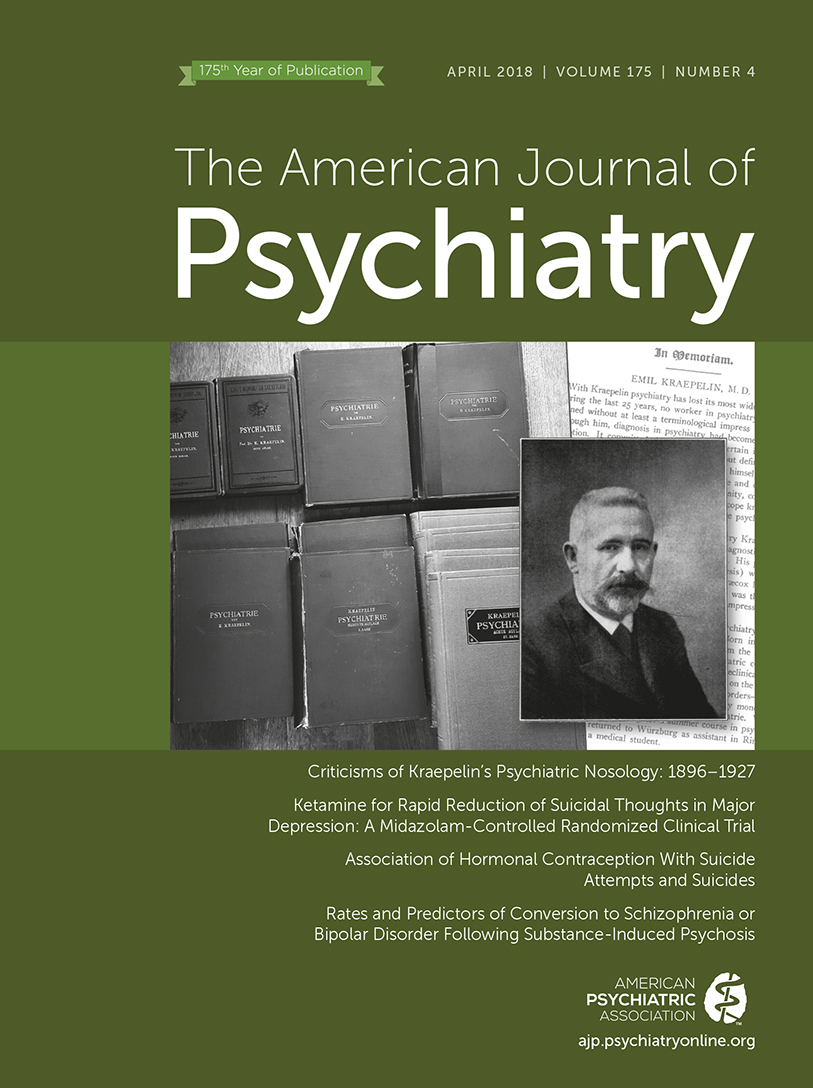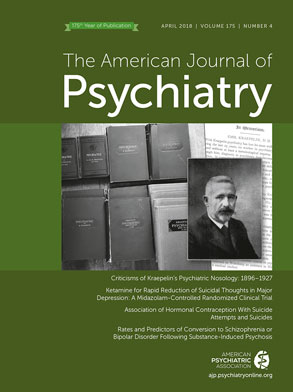Two types of matter comprise our central nervous system: gray matter, situated in cortical and subcortical brain regions, containing most of our neuronal cell bodies as well as dendrites, unmyelinated axons, and synapses that facilitate processing of sensory, motor, and other relevant information; and white matter, consisting of long-range myelinated axon tracts that coordinate signals between these regions. During adolescence, synaptic pruning (refining of neuronal connections) decreases gray matter while increased axon myelination (improving speed and quality of signal relay) increases white matter (
1). These structural changes are thought to enhance cognitive efficiency as teenagers brave the transition to adulthood, but it is unclear exactly when and how substance use may derail this progression.
A growing literature demonstrates that adults diagnosed with substance use disorders exhibit lower gray and white matter volume than do healthy subjects (
2,
3), which is suggestive of derailed cytoarchitecture manifesting during the addiction process. However, given that the majority of work in this area is cross-sectional or focuses on chronic substance users, our ability to disentangle whether structural brain changes are a consequence of or precursor to the development of chronic use is limited.
Although in recent months the media has focused its spotlight on deleterious impacts of the opioid epidemic as well as cannabis legalization, longitudinal neuroimaging research reported in this issue by Pfefferbaum and colleagues (
4) cautions us that accelerated alcohol use during the teen years is still relevant and problematic, as it is associated with structural brain deficits similar to those apparent in adults who endorse chronic or relapsing alcohol use (
3,
5,
6). In this investigation, five research sites involved in the National Consortium on Alcohol and Neurodevelopment in Adolescence (NCANDA) project collected baseline structural MRI scans in 483 adolescents with zero to low alcohol use and followed them up with additional scans and substance use queries 1 and 2 years later to determine which teenagers transitioned to moderate and heavy alcohol use.
The researchers quantified gray and white matter volume in several brain regions for each MRI scan and then calculated the rate of gray and white matter change (the slope of increase or decrease) in each participant per year. Next, they compared slopes between adolescents who remained zero to low alcohol users (no/low users, designated as the control group; N=356) and two other groups: those who transitioned to moderate alcohol use (N=62; on average, 36 lifetime drinks and 15 drinking days) and those who transitioned to heavy alcohol use (N=65; on average, 150 lifetime drinks and 43 drinking days) during the follow-up period. Group analyses accounted for variance involving age, sex, and their interaction, as well as research site, ethnicity, and presence or absence of heavy marijuana use. The groups did not differ at baseline on internalizing or externalizing psychopathology, socioeconomic status, or family history of alcohol use disorder, which implies that preexisting differences in these factors could not account for longitudinal findings.
Compared with adolescents who remained no/low users over time, those who transitioned to heavy alcohol use (13% of the sample) exhibited 1) a significantly greater rate of gray matter volume decline across the cortex, with the strongest deteriorations evident in the caudal middle and superior frontal gyri and the posterior cingulate cortex, and 2) slower white matter growth across the cortex. It is important to note that baseline gray and white matter volume alone did not differentiate the alcohol use groups, which suggests that the differences in brain structure were not present before onset of heavy alcohol use. On the contrary, increases in alcohol consumption paralleled aberrant structural brain changes over the 2-year period, providing evidence supporting the idea that gray and white matter derailment is indeed present at early stages of problem alcohol use.
The findings are consistent with previous work linking reductions in superior frontal gyrus gray matter volume with future binge drinking in adolescents (
7) as well as research demonstrating reduced superior frontal gyrus and posterior cingulate cortex gray matter volumes in children and adolescents deemed to be at high risk for future alcohol use disorder (
8). With respect to brain functionality, the superior frontal gyrus is thought to be involved in the implementation of cognitive control (via connections with the anterior cingulate), working memory (via connections with the middle and inferior frontal gyri), and sensorimotor control (via connections with the precentral gyrus and the supplementary motor area) (
9). The posterior cingulate cortex, with its connections to fronto-cingulate, temporal, thalamic, and hippocampal regions, is thought to be an information relay center involved in modulation of arousal, awareness, and internal versus external attentional focus (
10). Taken together, structural derailment of the superior frontal gyrus and the posterior cingulate cortex, paired with slowed white matter growth, could manifest behaviorally in impaired decision making and self-awareness, although more research is warranted to test this hypothesis.
The Pfefferbaum et al. study possesses several strengths, including structural MRI and substance use information collected at three time points, which facilitated statistical separation of individual (within-subject) variance from group (between-subject) variance; a substantial sample of adolescents, allowing for detection of small to medium effect sizes; sampling the range of adolescent experience (ages 12–21) in five different regions of the United States, increasing generalizability; and inclusion of marijuana course in analyses. It would be helpful for future studies of this kind to measure course of substances such as nicotine and prescription stimulants as well as to investigate potential functional decrements in decision making that may parallel increased substance use and structural damage.

